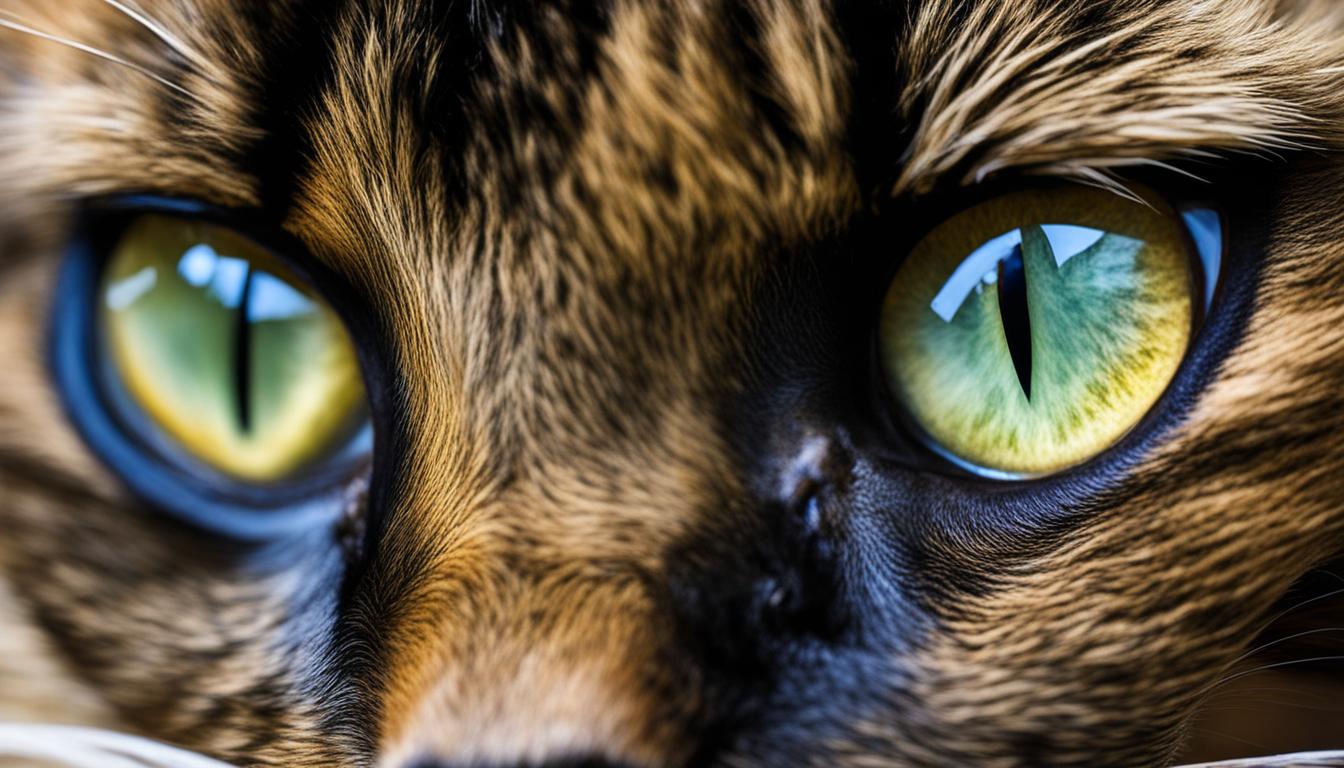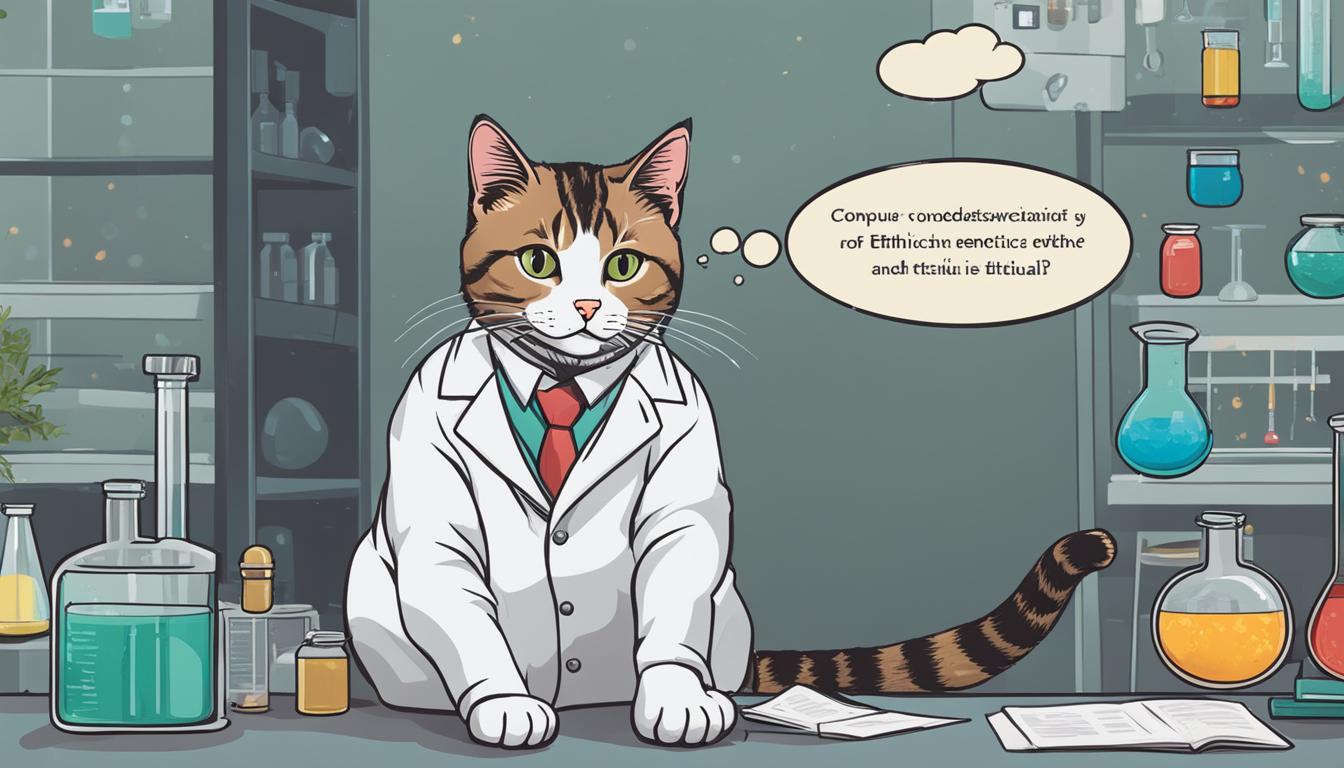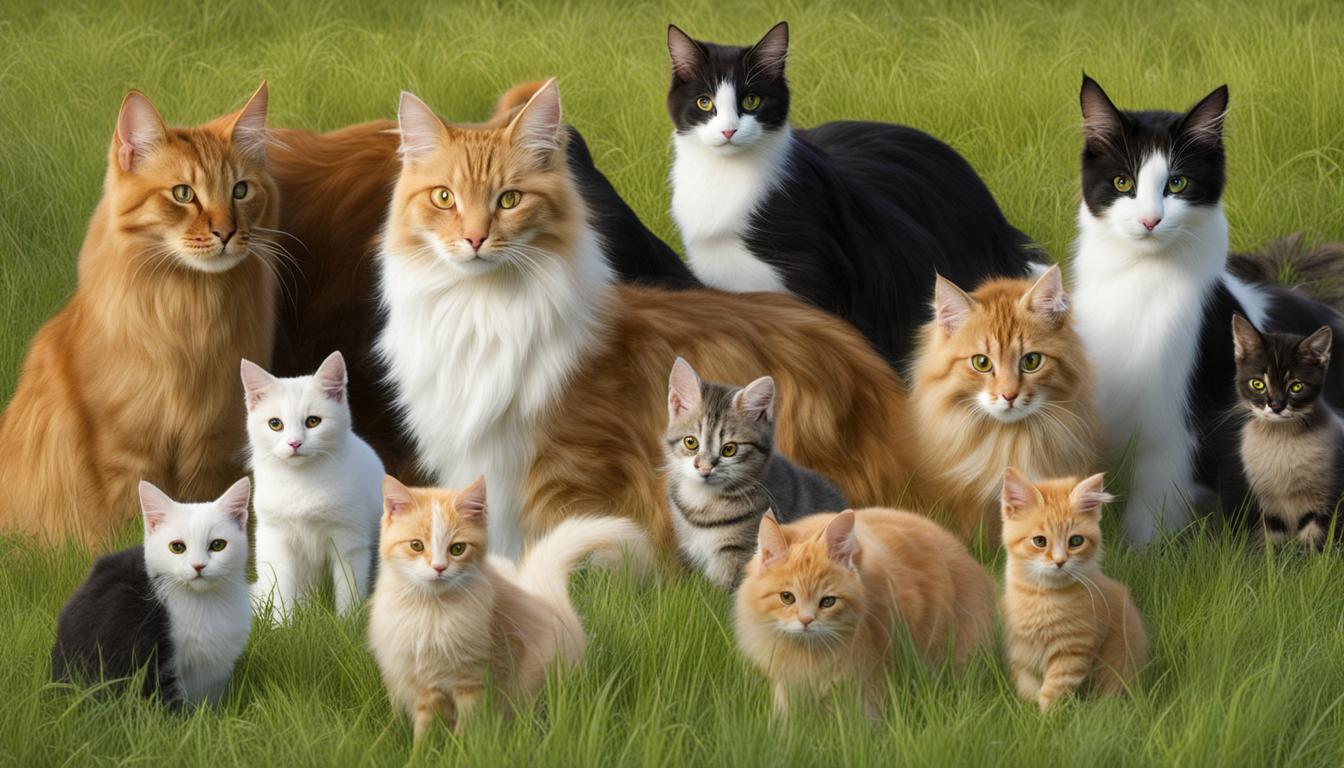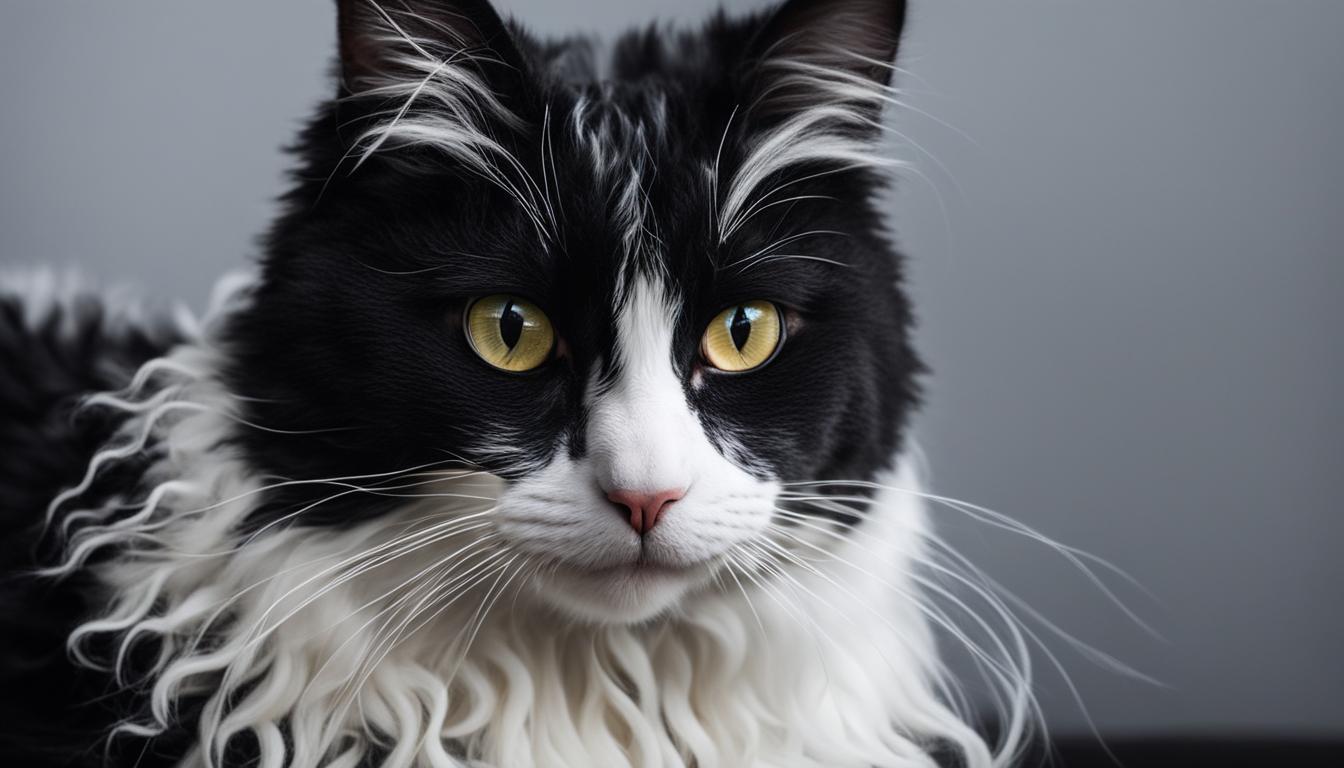Hey there, fellow feline enthusiasts! Today, I want to delve into a topic that’s both intriguing and concerning: inbreeding in cats. Yes, I know, it’s a touchy subject, but bear with me. After all, understanding the genetic and health implications of inbreeding is vital for the well-being of our beloved furry friends.
Now, I don’t want to dampen your spirits, but it’s important to recognize that inbreeding, although necessary in maintaining breed standards, can have some not-so-pleasant consequences. From decreased fertility to neonatal survival issues, there’s a lot at stake when it comes to the genetic future of our purring pals. But fret not! We have the power to make informed decisions and take steps towards preserving their health.
Key Takeaways:
- Inbreeding can negatively impact a cat’s fertility and neonatal survival.
- Commercial DNA panels can assist breeders in making informed choices.
- Veterinary clinicians should consider inbreeding when working with catteries or cat colonies with decreased fertility.
- Genetic diversity plays a crucial role in maintaining the overall well-being of cats.
- It’s essential for breeders to prioritize the health and welfare of their cats when considering inbreeding.
So, let’s embark on this journey together, uncovering the causes, health risks, and impact of inbreeding on our feline friends. By arming ourselves with knowledge, we can ensure a brighter, healthier future for these enchanting creatures we hold dear.
Causes and Definition of Inbreeding in Cats
Inbreeding in cats refers to the breeding practice of mating closely related cats, such as siblings or parents with their offspring. It is a technique used by breeders to achieve specific physical traits or to maintain the purity of a particular breed. Inbreeding can occur both intentionally, when breeders have a specific goal in mind, and unintentionally, when breeders are unaware of the cats’ family history.
There are several reasons why breeders may choose to engage in inbreeding. One of the main reasons is to preserve desirable traits within a breed. By mating cats with similar genetic characteristics, breeders can increase the likelihood of producing offspring that possess those desired traits. This practice is often seen in cat shows and competitions, where specific breed standards need to be met.
However, it is important to note that inbreeding can also have negative consequences. When closely related cats mate, there is an increased risk of passing on harmful recessive genes to their offspring. This can lead to the expression of genetic disorders and other health issues. Therefore, breeders must carefully consider the potential risks and benefits of inbreeding in their breeding programs.
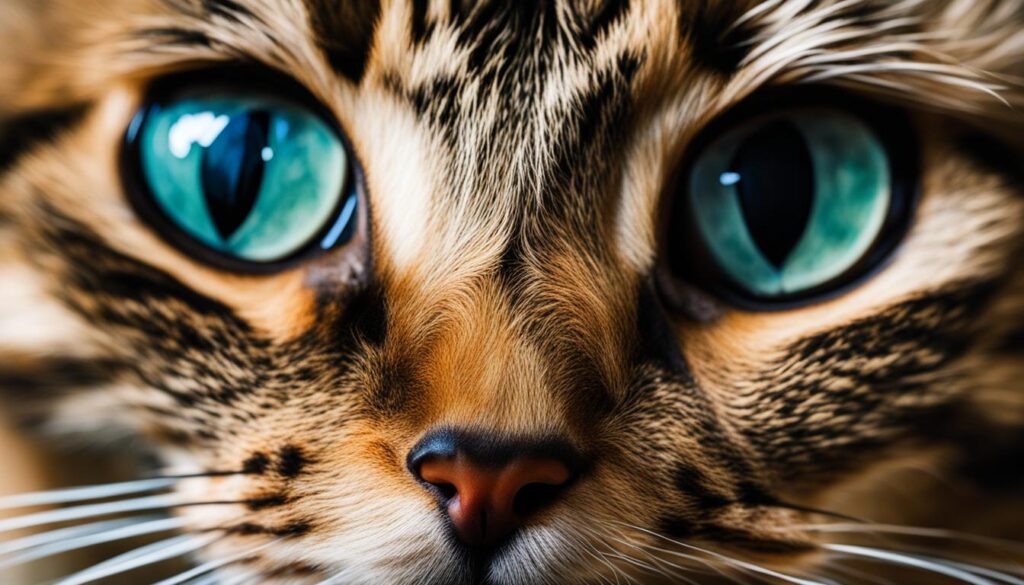
The Impact of Inbreeding on Genetic Diversity
Inbreeding can significantly reduce genetic diversity within a population of cats. When closely related cats mate, there is a limited range of genetic material that can be inherited by their offspring. This reduction in genetic diversity can have detrimental effects on the overall health and resilience of a breed.
One of the consequences of reduced genetic diversity is an increased risk of genetic abnormalities and diseases. With limited genetic variation, there is a higher likelihood of inheriting and expressing recessive traits and mutations. These mutations can arise spontaneously or be influenced by environmental factors. Inbreeding can amplify the presence of these mutations in subsequent generations, leading to a higher incidence of genetic disorders.
In conclusion, inbreeding in cats is a breeding practice that involves mating closely related cats to achieve specific traits or maintain breed purity. While it can have its benefits, such as producing predictable traits and meeting breed standards, it also comes with potential health risks and reduced genetic diversity. Breeders should carefully consider the consequences of inbreeding and prioritize the well-being and genetic health of their cats.
Health Risks and Genetic Disorders Associated with Inbreeding
Inbreeding in cats can have significant health risks and can lead to the development of genetic disorders. The limited gene pool that results from inbreeding increases the likelihood of harmful recessive genes being expressed, which can result in various health issues for the cats.
Inbreeding and Genetic Disorders
One of the major risks of inbreeding in cats is the higher prevalence of genetic disorders. Cats that are bred from closely related parents or siblings have a higher chance of inheriting genetic abnormalities. These disorders can range from heart defects and respiratory problems to immune system disorders and certain types of cancers.
Inbred cats are particularly susceptible to conditions such as hypertrophic cardiomyopathy (HCM), a hereditary heart disease that can lead to heart failure. They may also develop respiratory issues such as asthma or chronic bronchitis, which can significantly impact their quality of life.
Increased Risks of Inbreeding
In addition to genetic disorders, inbred cats are also at an increased risk of other health complications. Their compromised immune systems make them more vulnerable to infections and diseases. They may also experience fertility issues, which can lead to a decline in the population of the breed.
Furthermore, inbred cats may have a shortened lifespan compared to cats with more genetic diversity. The accumulation of genetic abnormalities and health conditions can result in a reduced life expectancy and overall poorer health.
Therefore, it is crucial for breeders to carefully consider the potential health risks associated with inbreeding and prioritize the well-being of the cats. Responsible breeding practices should focus on maintaining genetic diversity and reducing the prevalence of genetic disorders to ensure the long-term health and vitality of the breed.
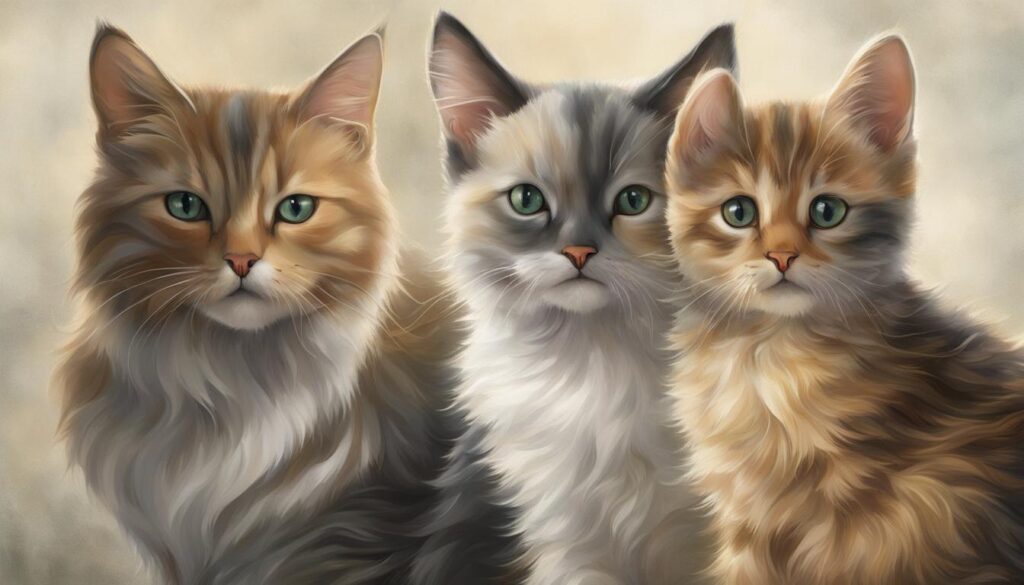
Summary:
- Inbreeding in cats can lead to the expression of harmful recessive genes and an increased risk of genetic disorders.
- Genetic disorders in inbred cats can include heart defects, respiratory problems, immune system disorders, and certain types of cancers.
- Inbred cats are more vulnerable to infections and diseases, have fertility issues, and may have a shortened lifespan compared to cats with more genetic diversity.
- Responsible breeders should prioritize genetic diversity and take steps to reduce the prevalence of genetic disorders in their breeding programs.
Table: Common Genetic Disorders in Inbred Cats
| Genetic Disorder | Common Symptoms | Treatment |
|---|---|---|
| Hypertrophic Cardiomyopathy (HCM) | Heart murmurs, difficulty breathing, lethargy | Medication, diet management, surgical intervention |
| Persian Hereditary Renal Amyloidosis (HRA) | Weight loss, loss of appetite, increased thirst | Diet management, supportive care |
| Familial Hypokalemia | Muscle weakness, fatigue, tremors | Dietary potassium supplementation, monitoring |
| Vestibular Disease | Loss of balance, head tilt, abnormal eye movements | Symptomatic treatment, supportive care |
Inbreeding’s Effect on Genetic Diversity
Inbreeding has a significant impact on the genetic diversity of cat populations. When closely related cats are bred together, the range of genetic material inherited by offspring becomes limited. This reduction in genetic diversity can have detrimental effects on the overall health and well-being of cats.
One of the consequences of inbreeding is an increased risk of genetic abnormalities and diseases. With a limited gene pool, harmful recessive genes are more likely to be expressed, leading to the development of various health conditions. Inbred cats may be prone to heart defects, respiratory problems, immune system disorders, and certain types of cancer.
Furthermore, inbreeding amplifies the likelihood of inheriting and expressing recessive traits and mutations. While some genetic mutations occur spontaneously or due to environmental factors, inbreeding can increase their presence in offspring. This can result in the manifestation of physical abnormalities and may further contribute to the health risks associated with inbreeding.
To illustrate the impact of inbreeding on genetic diversity, let’s consider a hypothetical comparison between a population of inbred cats and a population with a high level of genetic diversity. The table below demonstrates the contrasting levels of genetic diversity, as measured by the number of unique genetic combinations:
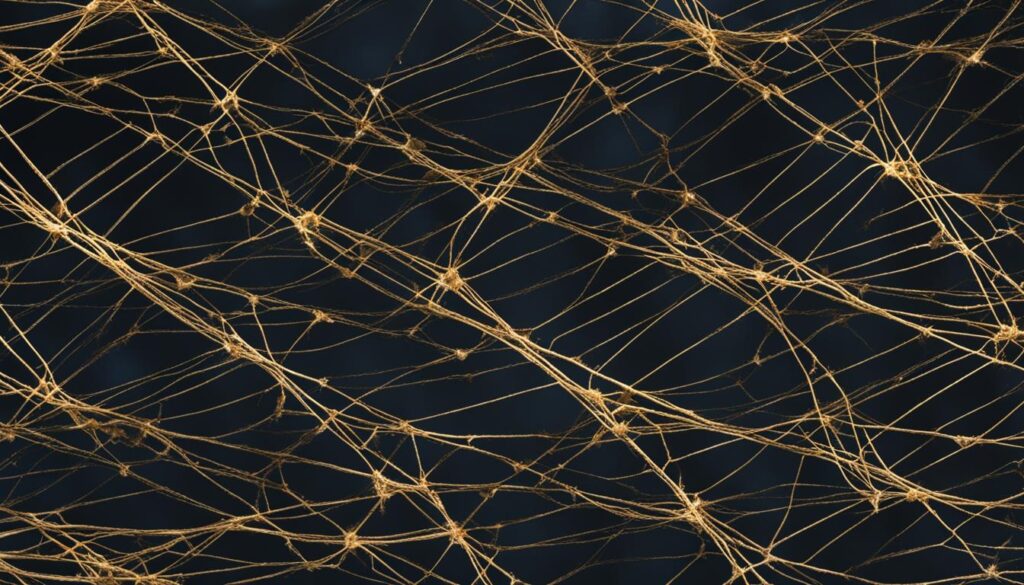
In this example, the inbred cat population has a significantly lower number of unique genetic combinations compared to the population with high genetic diversity. This limited genetic pool increases the chances of inherited disorders and makes it challenging for the population to adapt to new environments or stressors.
In conclusion, inbreeding in cats has a profound effect on genetic diversity. By reducing the range of inherited genetic material and increasing the expression of harmful traits, inbreeding poses significant health risks to cats. More research and awareness are needed to promote responsible breeding practices that prioritize the preservation of genetic diversity and the overall well-being of cats.
Health Risks and Complications of Inbreeding
Inbreeding in cats can have significant health risks and complications, leading to a range of congenital defects and abnormalities. These conditions are more prevalent in inbred cats due to the limited genetic diversity resulting from closely related breeding.
Inbred cats are at a higher risk of developing congenital defects such as narrowed nostrils, cleft palates, heart defects, and spinal abnormalities. These conditions can significantly impact their quality of life and require ongoing veterinary care.
In addition to congenital defects, inbred cats are also more susceptible to various diseases. Their compromised immune systems make them more vulnerable to respiratory infections, gastrointestinal issues, and other health conditions. These cats may require more frequent medical intervention and have a decreased ability to fight off infections.
The decline in genetic diversity associated with inbreeding can also lead to fertility and reproductive issues. Inbred cats may experience difficulties with breeding, resulting in a decline in the population of certain breeds. Furthermore, studies have shown that inbred cats may have a shortened lifespan compared to cats with more genetic diversity.
Table: Health Risks and Complications of Inbreeding
| Health Risks and Complications | Description |
|---|---|
| Congenital Defects | Inbred cats have a higher likelihood of being born with congenital defects, including narrowed nostrils, cleft palates, heart defects, and spinal abnormalities. |
| Increased Susceptibility to Diseases | Inbred cats have compromised immune systems, making them more susceptible to respiratory infections, gastrointestinal issues, and other health conditions. |
| Fertility and Reproductive Issues | The limited genetic diversity in inbred cats can result in fertility and reproductive issues, leading to a decline in the population of certain breeds. |
| Shortened Lifespan | Studies have shown that inbred cats may have a shortened lifespan compared to cats with more genetic diversity. |
It is crucial for cat breeders to understand and consider these health risks and complications associated with inbreeding. Responsible breeding practices should prioritize the well-being of cats and aim to maintain genetic diversity to mitigate the negative effects of inbreeding.
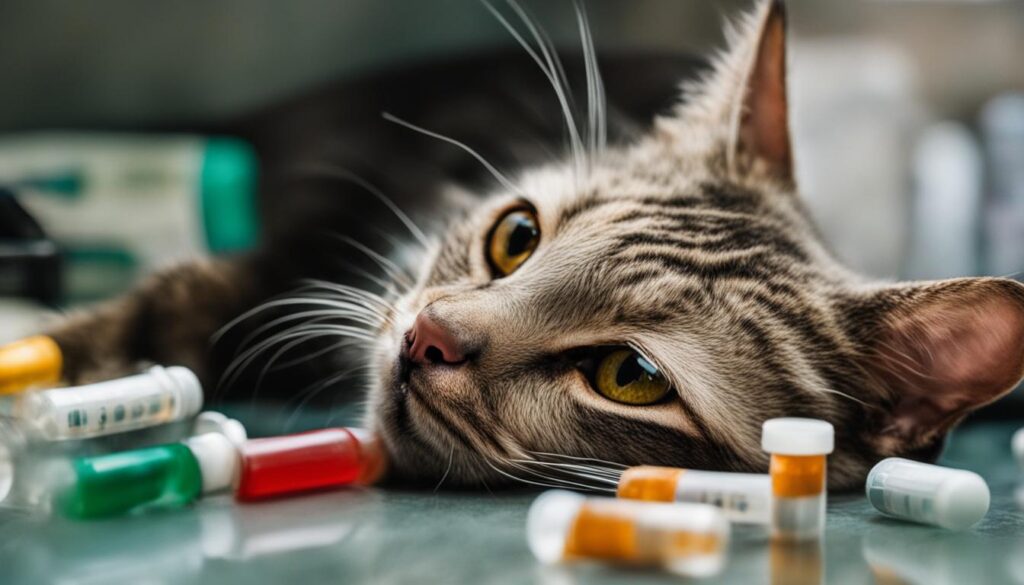
Conclusion
I’ve explored the fascinating world of inbreeding in cats, uncovering its genetic and health implications. Inbreeding is a double-edged sword, with both positive and negative consequences for our feline friends.
On one hand, inbreeding is essential for maintaining breed standards and producing cats with specific physical traits. It allows breeders to create predictability and consistency within a breed, giving us those adorable features we’ve come to love.
However, we mustn’t ignore the potential downsides. Inbreeding increases the risk of genetic disorders and congenital defects in cats. These health issues can have a significant impact on their quality of life and even lead to a shortened lifespan.
As responsible breeders, we need to consider the consequences of inbreeding. It’s crucial to prioritize the well-being of our furry companions and maintain genetic diversity. By doing so, we can minimize the risks associated with inbreeding and ensure a healthier future for our beloved cats.
FAQ
What is inbreeding in cats?
Inbreeding in cats refers to breeding closely related cats, such as siblings or parents with offspring.
Why do breeders choose to inbreed cats?
Breeders may choose to inbreed cats to produce specific physical traits or maintain purity within a breed.
What are the health risks of inbred cats?
Inbred cats are at an increased risk of genetic disorders, congenital defects, and health complications.
What kind of genetic disorders can inbred cats develop?
Inbred cats can develop heart defects, respiratory problems, immune system disorders, and certain cancers.
Does inbreeding reduce genetic diversity in cats?
Yes, inbreeding reduces genetic diversity in cats by limiting the range of inherited genetic material.
Can inbreeding lead to decreased fertility in cats?
Yes, inbreeding can lead to fertility and reproductive issues in cats, which can result in a decline in the breed’s population.
Are inbred cats more susceptible to diseases?
Yes, inbred cats are more vulnerable to respiratory, gastrointestinal, and immune system issues.
What are some of the congenital defects and abnormalities in inbred cats?
Inbred cats may have narrowed nostrils, cleft palates, heart defects, and spinal abnormalities.

